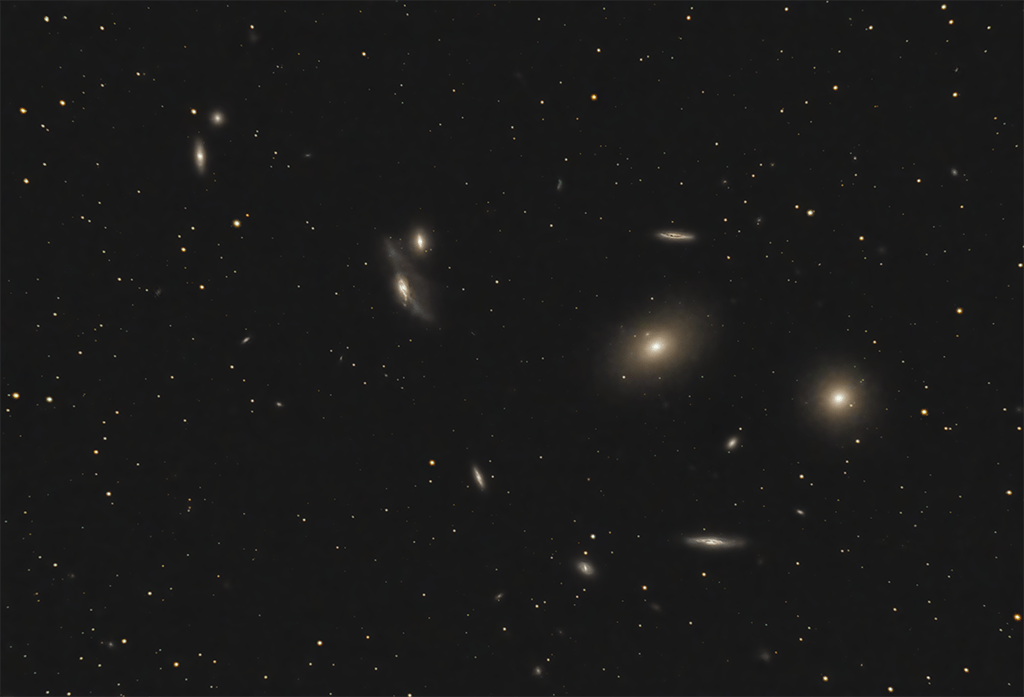This is an astrophotograph of Markarian’s Chain of Galaxies. It is a string of galaxies in the Virgo Cluster of Galaxies in the constellation Virgo. There are two large but featureless lenticular galaxies on the right, M84 and M86 (these are their numbers in Charles Messier’s catalogue of non-cometary fuzzy objects). Prominent to their upper left is a pair of interacting galaxies known as The Eyes. At least seven galaxies in the chain appear to move coherently, although others appear to be superposed by chance. The home Virgo Cluster is the nearest cluster of galaxies to our Milky Way, and contains over 2000 galaxies.

This session was the first session with my new camera: The Altair Hypercam 294C PRO colour fan-cooled camera. This camera has a 4/3″ sensor, which is significantly larger than the 1/2.8″ IMX290 sensor in my other astrophotography camera: The Altair GPCAM3 290C. I was concerned that the image would suffer with comatic aberration (making off-axis stars appear distorted). This is indeed the case, but it is far less pronounced than I feared. In any case, I will soon receive and calibrate my Revelation Field Flattener which should resolve the problem altogether.
I was also worried that my EQ5 equatorial mount might struggle to autoguide as accurately with the heavier camera. The mount is technically already overloaded for astrophotography. Actually, it is coping really well: The guiding error due to the greater weight is offset by the increased pixel scale since this camera has bigger pixels. Guiding errors were only noticeable in a handful of frames.
Since I was worried about guiding error, I limited exposures to 1 min each. I suspect this has lead to a noisier image (every frame contributes its own read noise to the final image so it’s generally better to take fewer longer-exposure frames), and difficulty in bringing out the colours, not to mentioned 15 GB of data due to the many files! In theory, the difference between short and long exposures is only minor with a CMOS sensor, but I find colour is easily lost with short exposures and the resulting image is also much harder to process. In future I will definitely up the exposure time!
Frames
- 354× 60-s light frames
- 50× dark frames
- 40× flat frames
- 40× dark flat frames
- 100× bias frames
Equipment
- Explore Scientific ED 102 mm Apo f/7 refractor
- Sky-Watcher EQ5 PRO SynScan GOTO equatorial mount
- Altair Hypercam 294C PRO colour fan-cooled camera
- Altair 60mm guide scope
- Altair GPCAM2 AR0130 mono guide camera
Software
- Sharpcap
- PHD2
- DeepSkyStacker
- Photoshop
- Gradient XTerminator
- Topaz DeNoise AI
- StarNet


